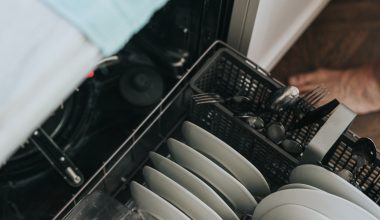Stop ice buildup in the fridge is one of the banes of my life, I venture into my fridge often to find a frozen carrot (which is nearly impossible to cut or rotten!). For this reason, I’m going to be taking you through some handy tips and tricks to stop ice buildup!
Troubleshooting your mini fridge Ice Buildup
The first thing you need to do to stop ice buildup in your mini-fridge is check for a few things. First off ensure your doors are closed properly, and if they are making sure you avoid opening them for too long or too often. This affects the humidity within the fridge and can cause ice buildup.
Additionally, if the hinges are weak, you may need to tighten them with a screwdriver. Propping up the mini-fridge on little legs can also help the doors shut properly!
Finally, make sure your door seal is working well. If it isn’t and is loose, it means the door won’t be fully closed. If you run your hand across the seal and feel a gust of air, rub some petroleum jelly into the gap to push the seal back. This should help stop the air from escaping. If not, you may need to replace your seal.
One other troubleshooting you may need to conduct is checking your vents. If they are blocked it can cause circulation issues- which can affect the temperature of your mini-fridge! You can use hot water to clean the inside of your fridge. Of course, make sure you have somewhere to put food that may go off first.
Keeping the fridge clean will help the cool circulation in the mini-fridge work effectively. You can also unclog the condenser coils with a vacuum but unplug your fridge first.
Spacing out food
Spacing is important. Especially in a mini fridge, as you don’t have much of it. If it’s too crowded the air cannot circulate properly which leads to frost! If the large items are too near the cooling mechanisms otherwise the fridge won’t be able to circulate air and ice will build up in large chunks. In a mini fridge, space is limited I know, but ice buildup will take up even more space!
Avoid Sunlight
Place your fridge away from intense sunlight as this will affect the thermostat, making the fridge overwork itself causing lumps of ice to form. You want a fridge, not a freezer! (Unless you have a freezer in your fridge of course!).
If you do have a small freezer in your mini-fridge, then avoiding storing it in super cold temperatures could mean your food won’t freeze well as the freezer already assumes it’s cold enough. So watch that! This might mean designing your kitchen to locate your fridge better.
Get the Right Setting!
When you first get your fridge don’t place it on the coldest setting if this is an option you have. This is for sure going to cause issues such as over freezing. The ideal temperature would be approximately 39.2 Fahrenheit.
Wet Foods
Wet foods, which contain large amount of water can cause moisture to build and therefore ice. Additionally if you are putting in hot meals to save them for a later date, instead wait for them to cool before putting them in the fridge. This will help avoid condensation building.
Something to Remember
It is important to note that formation of ice doesn’t necessarily mean your mini fridge is faulty. It is perfectly normal, but with all the tips in place that I have discussed, there should only ever be a thin layer of ice as opposed to large blocks.
How Do I Get Rid Of The Ice?
If you try all these things and you still get unwanted buildup then here’s a basic tip to get rid of it. You need some hot water and a tool to scrape away. Use the water to soften the ice enough to remove the ice by scraping it.
You can also dip the tool in the water (if using a hard brush) and then scrub away at the ice. Of course, use a tool that isn’t too sharp as you don’t want to scratch anything. It’s rather self-explanatory and quite time-consuming so if possible you want to do everything you can to avoid ice forming where it isn’t wanted.
I hope this article has given a few solutions and troubleshoots to stop ice build-up in your mini-fridge – an incredibly annoying problem. When you next notice ice forming where it shouldn’t be, remember to check the seal, check your food spacing, ensure your vents are clean, avoid direct sunlight on the fridge and avoid putting hot meals straight in the fridge. If you do all of these things, it should help reduce the ice formation.






